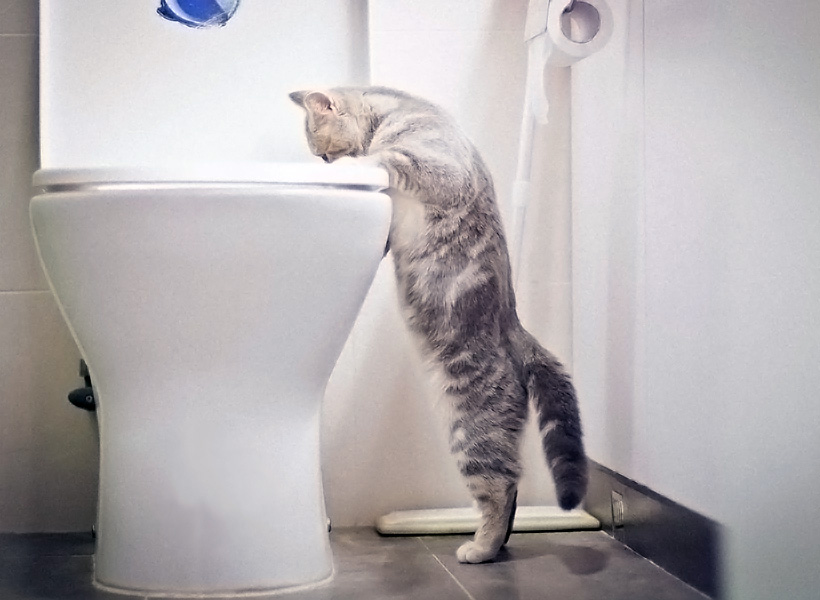Prevent Bathroom Emergencies: Never Flush Cat Poop Down Your Toilet - Professional Advice
Prevent Bathroom Emergencies: Never Flush Cat Poop Down Your Toilet - Professional Advice
Blog Article
We've noticed this article about How to Dispose of Cat Poop and Litter Without Plastic Bags directly below on the internet and decided it made good sense to share it with you on this site.

Introduction
As pet cat owners, it's vital to be mindful of how we dispose of our feline close friends' waste. While it might seem convenient to purge cat poop down the commode, this technique can have harmful consequences for both the environment and human health.
Environmental Impact
Flushing pet cat poop introduces hazardous microorganisms and bloodsuckers right into the water system, positioning a substantial danger to aquatic communities. These impurities can adversely affect marine life and compromise water high quality.
Health and wellness Risks
Along with ecological worries, purging cat waste can likewise present health and wellness threats to humans. Feline feces might have Toxoplasma gondii, a parasite that can cause toxoplasmosis-- a potentially extreme illness, especially for pregnant women and individuals with weakened immune systems.
Alternatives to Flushing
Thankfully, there are much safer and extra liable means to take care of pet cat poop. Take into consideration the following alternatives:
1. Scoop and Dispose in Trash
The most common approach of disposing of feline poop is to scoop it into a naturally degradable bag and throw it in the garbage. Be sure to utilize a devoted trash inside story and get rid of the waste immediately.
2. Usage Biodegradable Litter
Choose biodegradable feline litter made from materials such as corn or wheat. These trashes are eco-friendly and can be securely thrown away in the garbage.
3. Hide in the Yard
If you have a lawn, think about hiding pet cat waste in a designated area far from veggie gardens and water sources. Make certain to dig deep sufficient to avoid contamination of groundwater.
4. Set Up a Pet Waste Disposal System
Purchase a family pet waste disposal system specifically made for feline waste. These systems use enzymes to break down the waste, lowering odor and environmental effect.
Conclusion
Responsible pet possession extends past giving food and shelter-- it additionally entails proper waste administration. By refraining from flushing feline poop down the toilet and opting for alternate disposal methods, we can lessen our ecological footprint and secure human wellness.
Why Can’t I Flush Cat Poop?
It Spreads a Parasite
Cats are frequently infected with a parasite called toxoplasma gondii. The parasite causes an infection called toxoplasmosis. It is usually harmless to cats. The parasite only uses cat poop as a host for its eggs. Otherwise, the cat’s immune system usually keeps the infection at low enough levels to maintain its own health. But it does not stop the develop of eggs. These eggs are tiny and surprisingly tough. They may survive for a year before they begin to grow. But that’s the problem.
Our wastewater system is not designed to deal with toxoplasmosis eggs. Instead, most eggs will flush from your toilet into sewers and wastewater management plants. After the sewage is treated for many other harmful things in it, it is typically released into local rivers, lakes, or oceans. Here, the toxoplasmosis eggs can find new hosts, including starfish, crabs, otters, and many other wildlife. For many, this is a significant risk to their health. Toxoplasmosis can also end up infecting water sources that are important for agriculture, which means our deer, pigs, and sheep can get infected too.
Is There Risk to Humans?
There can be a risk to human life from flushing cat poop down the toilet. If you do so, the parasites from your cat’s poop can end up in shellfish, game animals, or livestock. If this meat is then served raw or undercooked, the people who eat it can get sick.
In fact, according to the CDC, 40 million people in the United States are infected with toxoplasma gondii. They get it from exposure to infected seafood, or from some kind of cat poop contamination, like drinking from a stream that is contaminated or touching anything that has come into contact with cat poop. That includes just cleaning a cat litter box.
Most people who get infected with these parasites will not develop any symptoms. However, for pregnant women or for those with compromised immune systems, the parasite can cause severe health problems.
How to Handle Cat Poop
The best way to handle cat poop is actually to clean the box more often. The eggs that the parasite sheds will not become active until one to five days after the cat poops. That means that if you clean daily, you’re much less likely to come into direct contact with infectious eggs.
That said, always dispose of cat poop in the garbage and not down the toilet. Wash your hands before and after you clean the litter box, and bring the bag of poop right outside to your garbage bins.
https://trenchlesssolutionsusa.com/why-cant-i-flush-cat-poop/

We hope you liked our excerpt about Can You Flush Cat Poop Down The Toilet?. Thank you so much for taking the time to read through our piece. So long as you liked our blog entry kindly be sure to share it. I recognize the value of reading our article about Can You Flush Cat Poo or Litter Down the Toilet?.
Schedule Today! Report this page